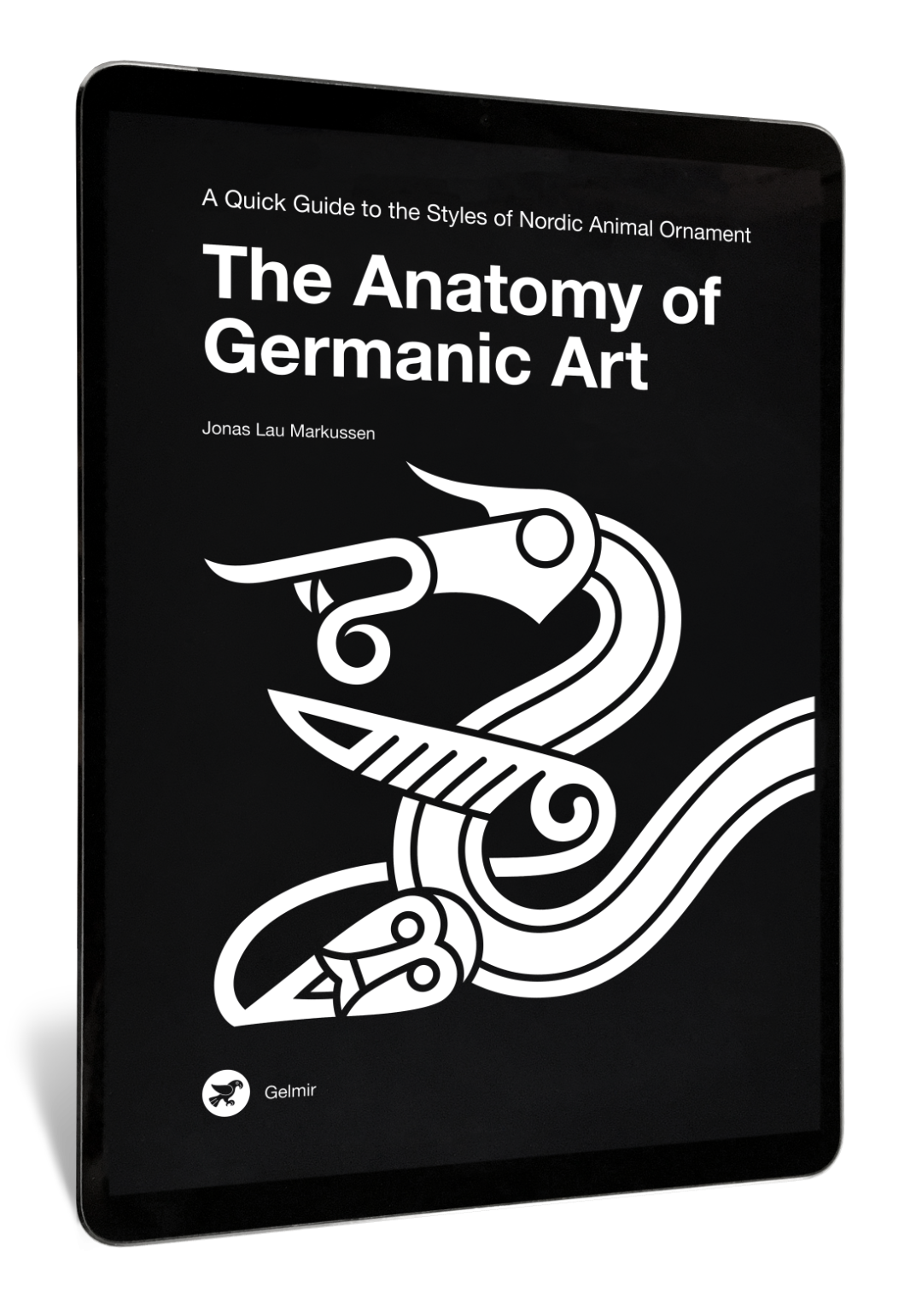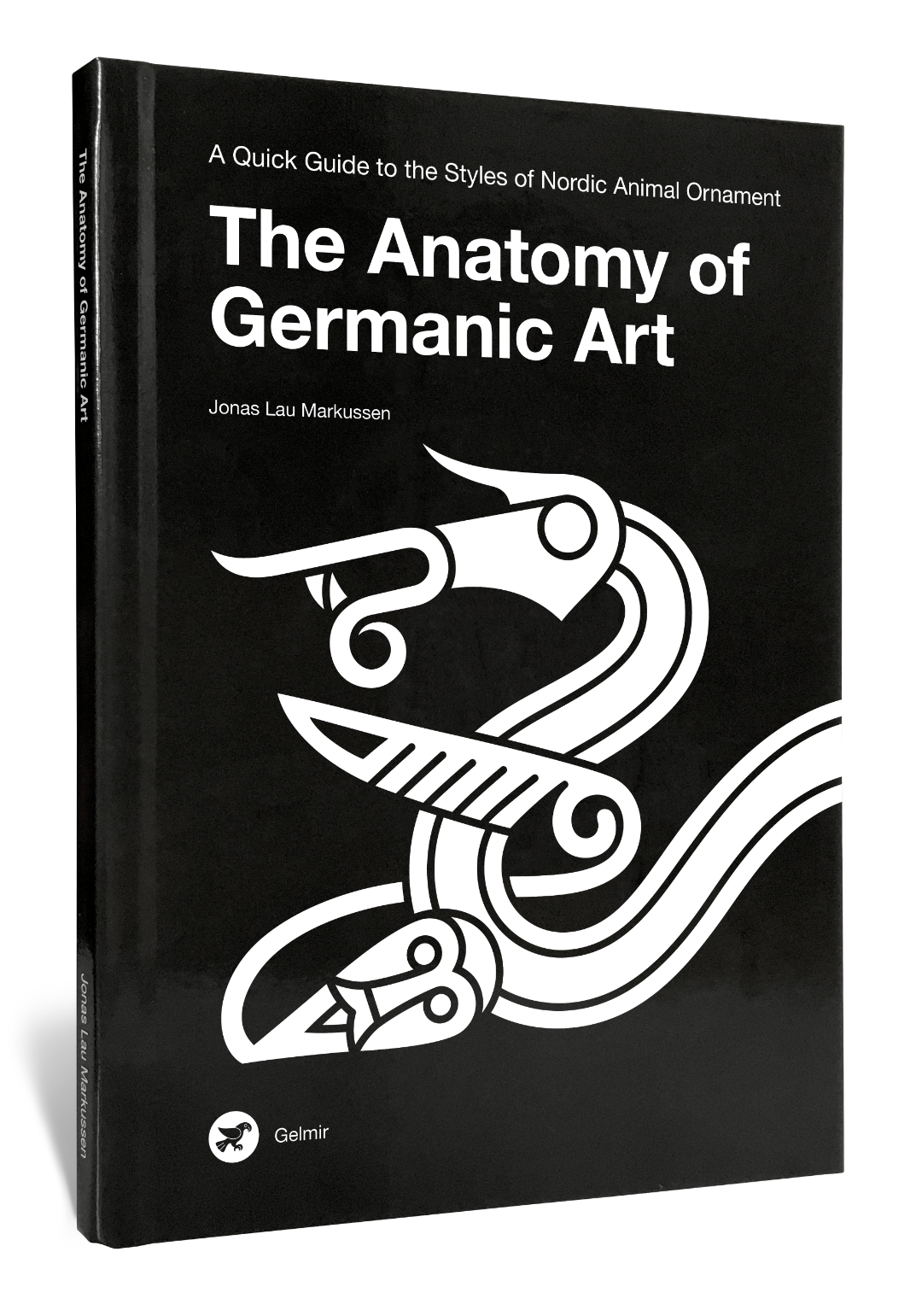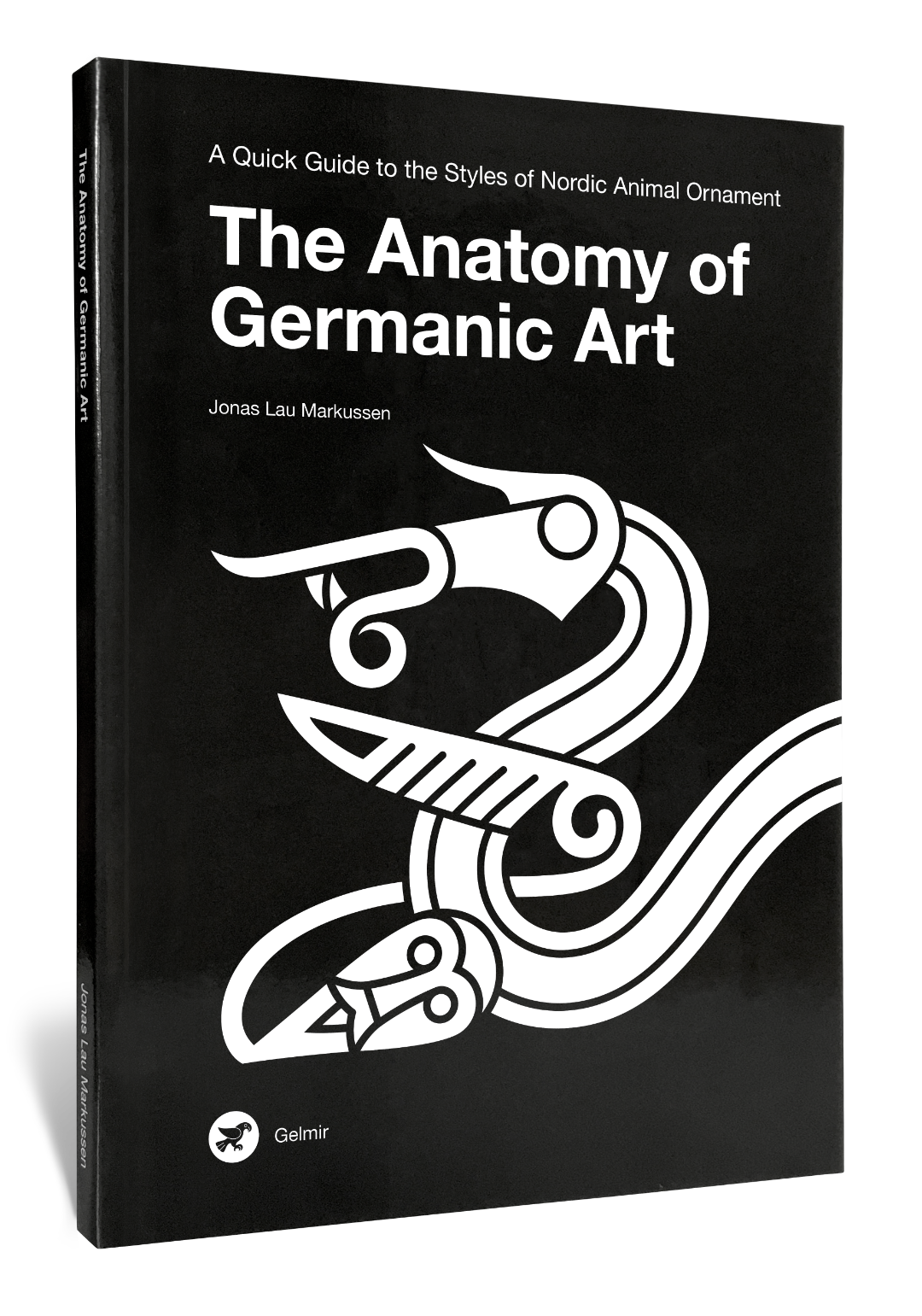Gelmir
Book • The Anatomy of Germanic Art
Book • The Anatomy of Germanic Art
Couldn't load pickup availability



Discover the roots of Viking Art
Think of the Germanic Iron Age (c. 400–800 CE) as the workshop where Viking art takes shape.
From the Early Animal Style (Sösdala & Nydam) through Style I and the Style II variants, craftsmen refined ribbon‑animal bodies, mask heads, and interlace logic that later reappear—more familiar but clearly related—in the Viking Age styles (Broa to Urnes).
This book connects those dots, showing what carries forward, what changes, and how finds across Scandinavia link the Germanic Iron Age to the visual language of the Vikings.

Anatomy & characteristics — Each style chapter opens with diagrams introducing the building blocks (shapes, outlines, ribbon flow, and pattern elements) for quick understanding and accurate reconstruction.
The Anatomy of Germanic Art is your map to the styles behind the masterpieces
Grounded in archaeological scholarship but made accessible for everyone, it demystifies centuries of design evolution with clear illustrations and plain‑spoken explanations.
Who it’s for
- Designers, illustrators, and tattoo artists who want style‑correct Nordic motifs
- Researchers and educators seeking clear, visual analysis and historical context
- Reenactors and makers seeking style‑correct details
- Anyone passionate about Early Medieval Scandinavian culture and design.

Typical style motifs — Each style chapter includes illustrated motif plates showing the style’s most common forms organised for quick recognition and comparison.

Composition structures — Each style chapter includes schematic composition diagrams showing common layout types and interlacing paths, clarifying how motifs fit together for authentic construction.
This book shows how Germanic ornament works
Each chapter breaks down one style, step by step: characteristic shapes and outlines, how ribbons flow, how knots are constructed, and which motifs are used.
You’ll see composition diagrams, typical pattern structures, and annotated examples that explain what you’re looking at.
The historical context for each style is laid out with concise timelines, a list of key artefacts (with origins) that correspond to the pieces featured in A Compendium of Germanic Art, and a big‑picture map of the Early Medieval world at the back of the book
Use Anatomy to understand the system; use the Compendium to gather visual references.

Historical context & timeline — Each style chapter pairs a succinct overview with a clear timeline that sets the style within its wider historical moment.
Includes sub-chapters about the figurative art
In addition to the core style chapters on the ornamental art, this volume includes dedicated sections on the figurative art too:
- Gold Bracteates (Style I)
- Gold Foil Figures (Style II/B)
- Helmet Plates (Style II/B)
- Further Figurative Motifs

Figurative motifs — An example from the figurative motifs sub‑chapters. These sections collect recurring scenes and character types, presenting them in clear linework for quick recognition, comparison, and reconstruction.
What’s inside
- Styles covered: Early Animal Style (Sösdala & Nydam), Style I, Style II/B, Style II/C, Style II/D
- Figurative sub‑chapters: Gold Bracteates (Style I); Gold Foil Figures (Style II/B); Helmet Plates (Style II/B); Further Figurative Motifs
- Chronological overview of style development and relationships (c. 400–800 CE)
- Illustrations of key motifs, pattern types, and construction principles
- Composition & layout diagrams for each style
- Historical context for every chapter, including a timeline
- Style descriptions & development, with notable examples
- Per‑style artefact lists with origin info (correspond to items shown in A Compendium of Germanic Art)
- Historical maps of Scandinavia & Europe in the Early Middle Ages
- Original artwork by Jonas Lau Markussen throughout

Historical map of the Viking world — Map of Europe with key places and regions marked.
FAQs
Is this a history book or a design guide?
Both. It explains the history and anatomy of the styles and shows you how they’re constructed so you can recognise—or recreate—them accurately.
Does it include sources and artefact references?
Yes. Each style chapter ends with a list of artefacts (with origin info) corresponding to those reproduced in A Compendium of Germanic Art.
Will this help me draw in the styles?
Absolutely. The diagrams break down shapes, flow, and pattern logic so you can build motifs and layouts with confidence.
Is it beginner‑friendly?
Yes. The explanations are clear and visual, while still grounded in academic work.
About the Author
Jonas Lau Markussen is a Danish designer and illustrator whose passion for Viking Age art has led to years of in-depth study and visual analysis. His work is grounded in archaeological sources, bringing authenticity and accuracy to every page.
Pairs perfectly with
A Compendium of Germanic Art — Use Anatomy for rules, structures, and identification; use the Compendium for a large catalogue of photo references (with figure numbers and museum origins).
Specifications
- Pages: 88
- Size: 17.8 × 25.4 cm
- Format: Ebook, paperback or hardcover
- Language: English
- Published: 15‑11‑2024
All Books
-
Book • A Compendium of Germanic Art
Regular price From €20,00 EURRegular priceUnit price per -
Book • A Compendium of Viking Art
Regular price From €20,00 EURRegular priceUnit price per -
Book • Ringerike Style Essentials
Regular price From €20,00 EURRegular priceUnit price per -
Book • The Anatomy of Germanic Art
Regular price From €20,00 EURRegular priceUnit price per -
Book • The Anatomy of Viking Art
Regular price From €20,00 EURRegular priceUnit price per






